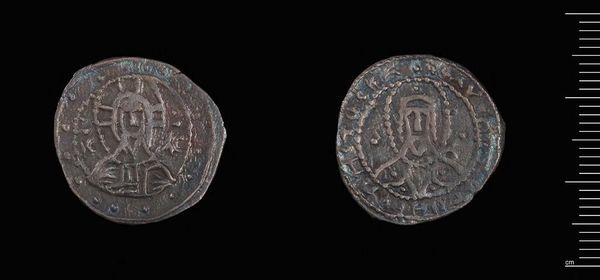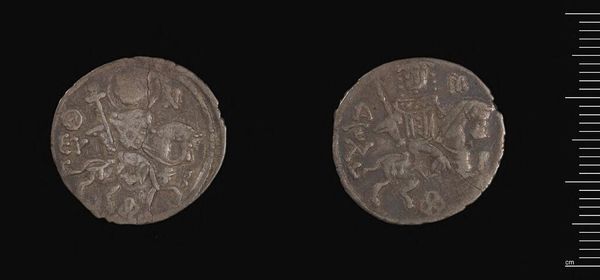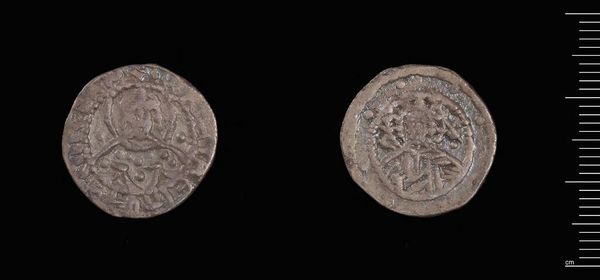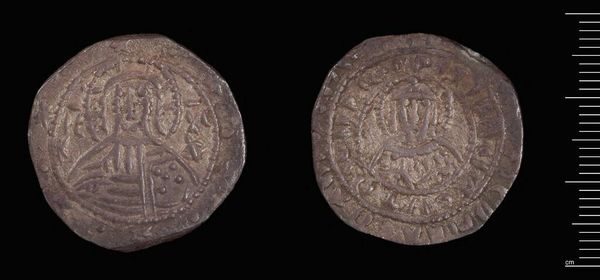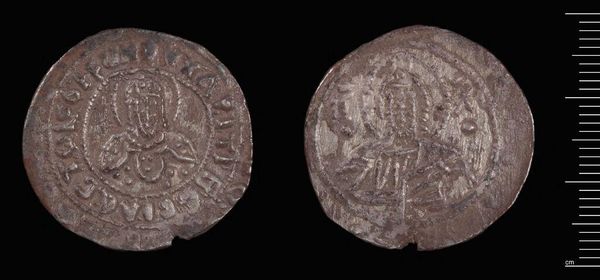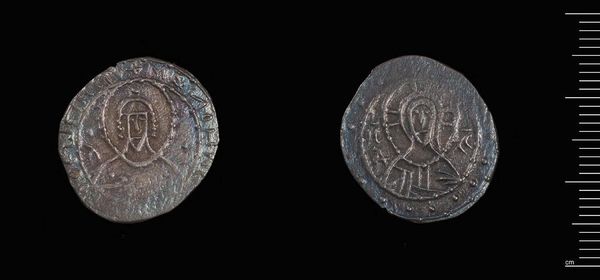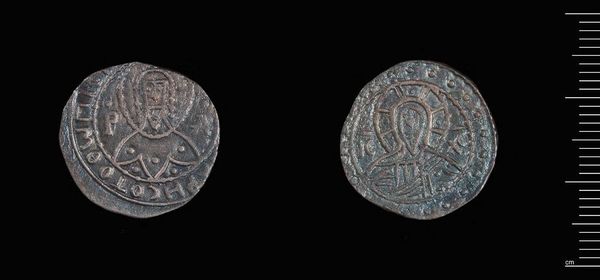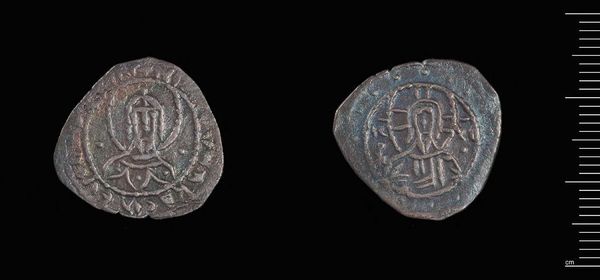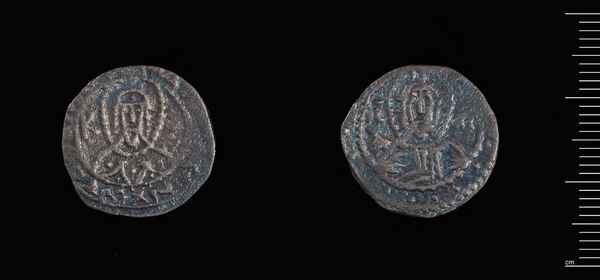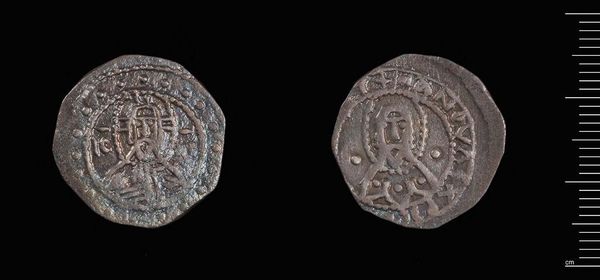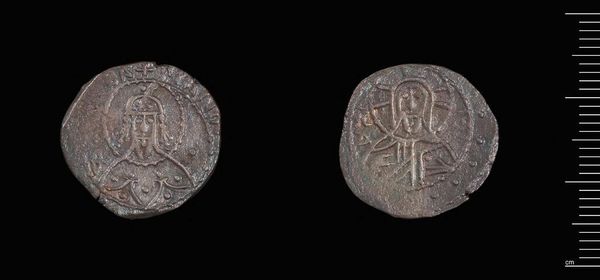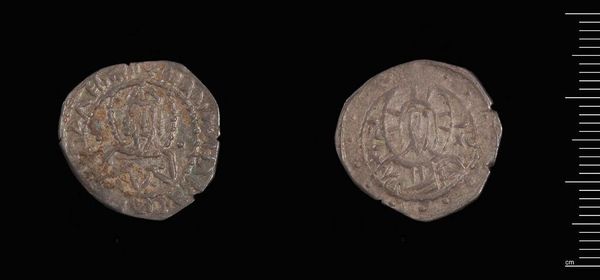
Dimensions: 3.78 g
Copyright: CC0 1.0
Editor: This is the Half-Stavraton of Manuel II, a coin with no precise dating, found in the Harvard Art Museums. It's fascinating how a small object can carry so much history. What can you tell me about it? Curator: Well, it's more than just currency; it’s a potent symbol of power and identity. Consider the historical context – Manuel II Palaeologus ruled a fractured Byzantine Empire, desperately seeking Western aid against the Ottomans. How might this coin reflect those power dynamics and social unrest? Editor: So, the imagery was a form of propaganda? Curator: Precisely. Coinage was carefully designed to project legitimacy and divine favor, especially crucial during times of crisis. The very act of minting currency was a statement of sovereignty. What do you notice about the imagery itself? Editor: I see a figure that I think is the Emperor. And the other side has what looks like an angel? Curator: Indeed. The depiction of Christ or a saint on the reverse emphasizes the emperor's role as God's representative on Earth. It's a fascinating intersection of politics, religion, and art. I wonder if we will ever know what stories it could tell. Editor: I never thought about coinage this way. Thanks for expanding my perception!
Comments
No comments
Be the first to comment and join the conversation on the ultimate creative platform.

